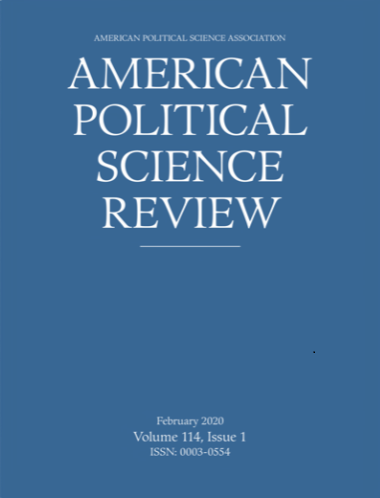Bringing in the New Votes: Turnout of Women after Enfranchisement
IF 5.9
1区 社会学
Q1 POLITICAL SCIENCE
引用次数: 0
Abstract
Under what conditions did newly enfranchised women turn out to vote at levels approaching men? This question is important because if women’s turnout lagged behind men’s, politicians’ incentives to advocate for women’s interests could remain weak even after suffrage. I argue that women’s turnout approached parity with men’s in localities with strong incentives to vote and to mobilize among the general population. This is because women faced barriers to voting and were, therefore, more likely to vote and be mobilized under the most favorable circumstances. I then propose that electoral competition determines the strength of voting and mobilization incentives and, therefore, the gender turnout gap. Using sex-separated turnout data in Norway, I demonstrate that the gap narrows in high-turnout competitive districts in systems with single-member districts and in high-turnout within-district strongholds in proportional systems. I probe generalizability of my findings in New Zealand, Austria, and Sweden.引入新选票:获得选举权后的妇女投票率
在什么条件下,新获得选举权的妇女的投票水平接近男性?这个问题很重要,因为如果女性的投票率落后于男性,那么即使在获得选举权之后,政客们倡导女性利益的动力可能仍然很弱。我认为,在有强烈动机投票和动员普通民众的地方,妇女的投票率接近于男子的投票率。这是因为妇女在投票方面面临障碍,因此在最有利的情况下更有可能投票和被动员起来。然后我提出,选举竞争决定了投票和动员激励的力度,因此也决定了性别投票率差距。我利用挪威按性别划分的投票率数据,证明了在单成员选区制度下的高投票率竞争选区和比例制度下的高投票率选区内据点的差距缩小。我在新西兰、奥地利和瑞典考察了我的发现的普遍性。
本文章由计算机程序翻译,如有差异,请以英文原文为准。
求助全文
约1分钟内获得全文
求助全文
来源期刊

American Political Science Review
POLITICAL SCIENCE-
CiteScore
9.80
自引率
5.90%
发文量
119
期刊介绍:
American Political Science Review is political science''s premier scholarly research journal, providing peer-reviewed articles and review essays from subfields throughout the discipline. Areas covered include political theory, American politics, public policy, public administration, comparative politics, and international relations. APSR has published continuously since 1906. American Political Science Review is sold ONLY as part of a joint subscription with Perspectives on Politics and PS: Political Science & Politics.
 求助内容:
求助内容: 应助结果提醒方式:
应助结果提醒方式:


